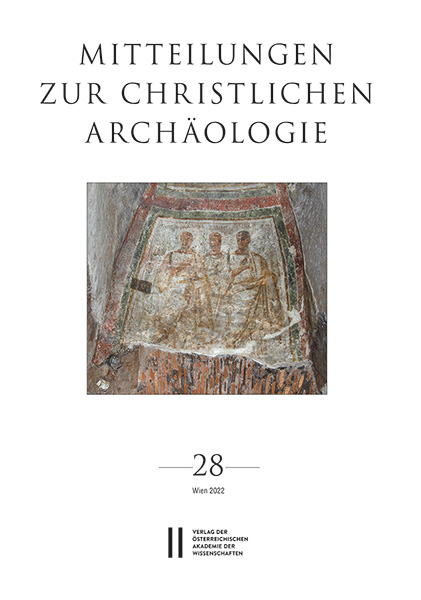 |
 |
Renate PILLINGER – Basema HAMARNEH - Reinhardt HARREITHER (Herausgebergremium)
Mitteilungen zur Christlichen Archäologie 28
Davide Bianchi
S. 45 - 65 doi: 10.1553/micha28s45
Verlag der Österreichischen Akademie der Wissenschaften doi: 10.1553/micha28s45
Abstract:
With the emergence of Christianity in Late Antiquity, a growing devotion of martyrs and saints as well as the cult of their relics spread in the Mediterranean area. A privileged focus of this phenomenon was the Holy Land, where many sacred bodily remains were identified, and then exported in the entire Christian oecumene, thereby becoming an instrument for the dissemination of the cults of saints. Indeed, bones and holy ashes were the prominent objects of veneration, and many churches and sanctuaries were equipped with special liturgical furnishings designed to accommodate the venerated relics. The archaeological evidence of these sacred spaces reveals that a common pattern of strategies was employed by Late Antique churches to place and arrange the sacred fragments they possessed. In order to understand their forms, locations and veneration systems, as well as their use and functioning, the aim of this paper is to pay special attention to the typological definition of the reliquaries found in the churches of the provinces of Palaestina and Arabia. The sacred installations that allowed the visual contact with relics will then be analysed to point out how these holy remains had a peculiar role in framing the liturgical and devotional space of the ecclesiastical buildings. A particular emphasis will be given to the results of the most recent archaeological excavations carried out in the region under examination.
Relics, Holy Land, Early Christian Architecture, Liturgical Installations, Christian Devotion Published Online:
2022/11/10 07:25:02 Object Identifier:
0xc1aa5576 0x003dcdc9
Rights:All rights reserved.For questions regarding copyright and copies please contact us by email.
I. ABTEILUNG: Beiträge
Fabrizio Bisconti †
Il pastore di Generosa. Il restauro dell’arcosolio dipinto nel coemeterium ad Sextum Philippi
sulla via Portuense
David Cardona
Wignacourt’s Complex 17: An Assessment of New Tombs and Hypogea
Davide Bianchi
Archäologische Zeugnisse für den Reliquienkult im Heiligen Land
Verena Fugger
Die älteste archäologisch nachweisbare Diakonie? Neue Überlegungen zum Baubefund der
Insula M/1 in Ephesos
Renate Johanna Pillinger
Der Heilige Quirinus von Siscia und der Heilige Martin in Savaria/Stein am Anger/Szombathely
II. ABTEILUNG: Literaturbericht
Reinhardt Harreither – Renate Johanna Pillinger
Bibliografie zur Spätantike und Christlichen Archäologie in Österreich
(mit einem Anhang zum spätantik-frühchristlichen Ephesos).
2021 erschienene Publikationen und Nachträge
MITARBEITER DIESES BANDES
|



 Home
Home
 Print
Print
 References
References
 Share
Share
